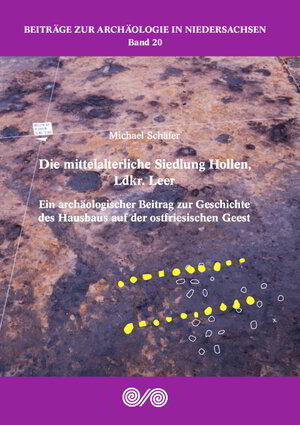Die mittelalterliche Siedlung Hollen, Ldkr. Leer
Ein archäologischer Beitrag zur Geschichte des Hausbaus auf der ostfriesischen Geest
von Michael SchäferFormerly surrounded by bogs on three sides, the village of Hollen is - still today - situated off all major traffic routes on the eastern fringe of the district of Leer. Its old age was attested by a mention as “Holanla” in the Werden Urbaria and was even raised by rescue excavations in 1986-8. These revealed groundplans of Medieval farm houses and their outbuildings on some 1.2 ha of sandy soil. Several generations of local stability caused a complex pattern of building features with many overlaps. The site began with finds and features of the 1st/2nd century A. D. The Medieval settlement from A. D. 800 until before 1350 produced local pottery [grey wares, shell grit wares] and Rhenish imports [Walberg, Badorf, Pingsdorf, Paffrath wares], loom weights, iron objects, iron working, stone tools, bones, and waggon and ship components. The building features represent at least 70 buildings [28 houses, 42 granaries], wells, pits, and ditches of what is one of the largest known Medieval settlements of Northern Germany. Farmsteads consisted of 1 to 2 single-aisled houses, often with convex longitudinal walls, several small granaries and/or hay barracks, and a well, usually built of sods.






